2001 Ford Puma 1.7
Ford puma at 25 — driven to meet its designer, Ian Callum.
ATOMIC KITTEN
As this the sweetest spot of Ford’s ‘New Edge’ purple patch? Today, 25 years since it was launched, I’m almost certain of it. The sun’s beating down and this Puma feels even better than my own did when I sold it more than a decade ago. A foolish move, I can’t help but conclude. I’ve been driving to a much more symbolic reunion, though, one with the dinky coupe’s design chief, the inimitable Ian Callum. Back in the mid-1990s Callum was working for TWR and the Aston Martin DB7 had just launched to widespread praise. He tells me: ‘Suddenly I have a calling card. Ford comes along and says “We’ve got this Yamaha engine and we’re looking for a car to put it in.” Rather than just put it in a Fiesta, they want to build a special car around it, to give the engine a unique home.’
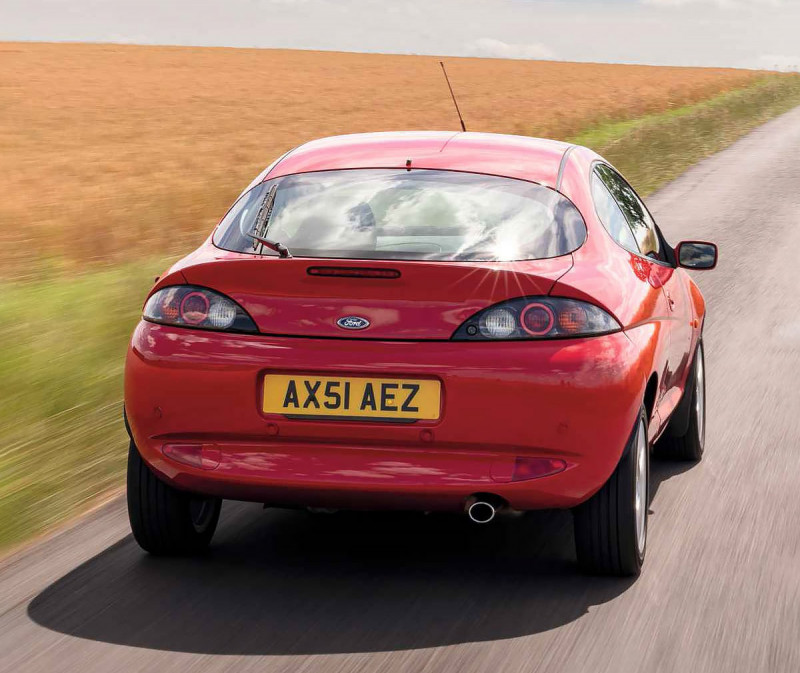
In the modern era of platform-sharing and parts-bin commonality — concepts that have hoovered up the individuality of affordable mainstream cars — it sounds like an absurd indulgence. ‘The fact that the Vauxhall Tigra was out gave the numbers boys an excuse to try something, otherwise I’m not sure this would have happened. Ford always measured to make sure a marketplace existed, and that’s something that was a big frustration for a designer with new ideas.’
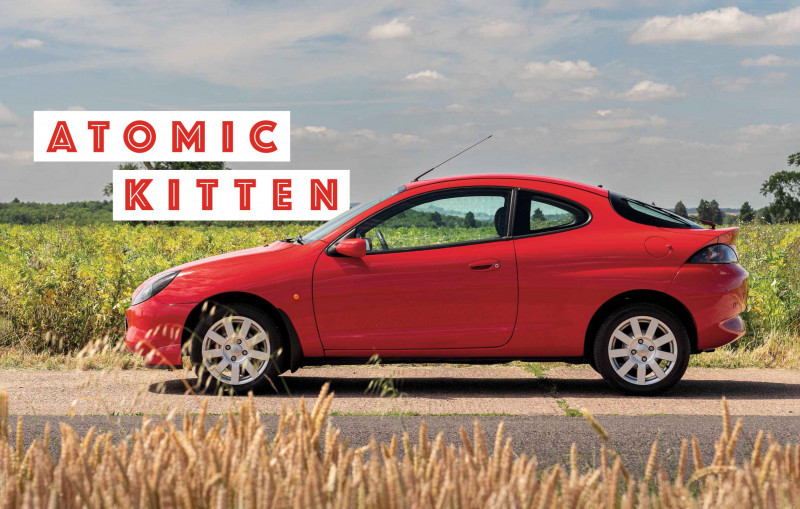
It brought the Puma to fruition, however, giving Callum one of his biggest-selling hits. ‘Designing this fascinated me more than designing something exotic because it’s more challenging,’ he tells me. ‘You have to think harder. At the end of the day, it gives a lot more people pleasure. It’s like a pop song. It’s nice to get a number one that people can all enjoy rather than some obscure track that only niche music fans will listen to.’
The challenge here was to whip up something exotic from a Fiesta platform. The body could be all-new, but the dimensions couldn’t change — and nor could the rather prosaic interior. ‘Design is about dealing with constraint and getting the best answer out of it,’ Ian says. ‘It’s not about just doing what you want and hoping somebody will build it. I have done that, mind. It was called the Jaguar C-X75...’
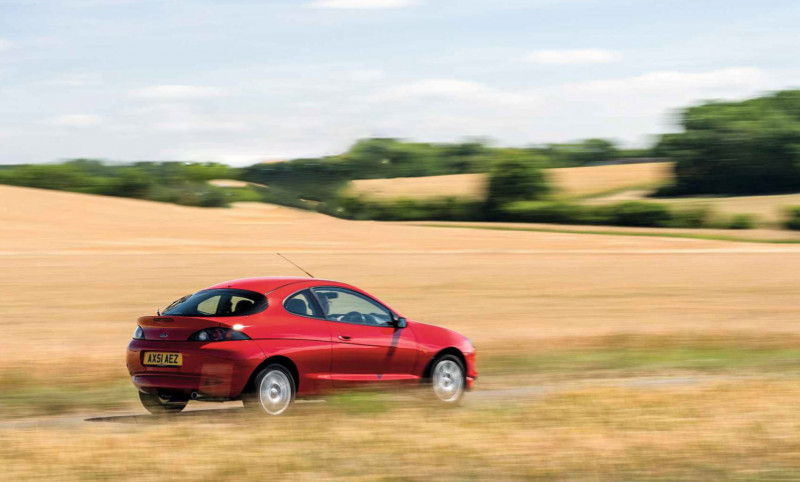
Ford had already sketched out some ideas for the Puma, but Ian made the car a reality. It hit the ground running in the way that attempted Capri successors hadn’t. ‘The first clay model had a very rounded behind, a bit like a 911 in the way it rolled off. I was never comfortable with it, and then we put it in a wind tunnel and it proved pretty bad. Then the rear spoiler went through various stages; it went up and up and up. I think it went higher than this at one point. I was left alone to evolve the car. It went to the wind tunnel twice — once at MIRA and again at Cologne — and we realised the soft back end was never going to work. So the rear spoiler evolved.
‘It’s not until you get the finished car outside that you can really see the design and whether it has a positive effect on you or a negative effect, but this impressed us all. It looked very cute. And it looked different. Which is something I wasn’t renowned for doing, really.
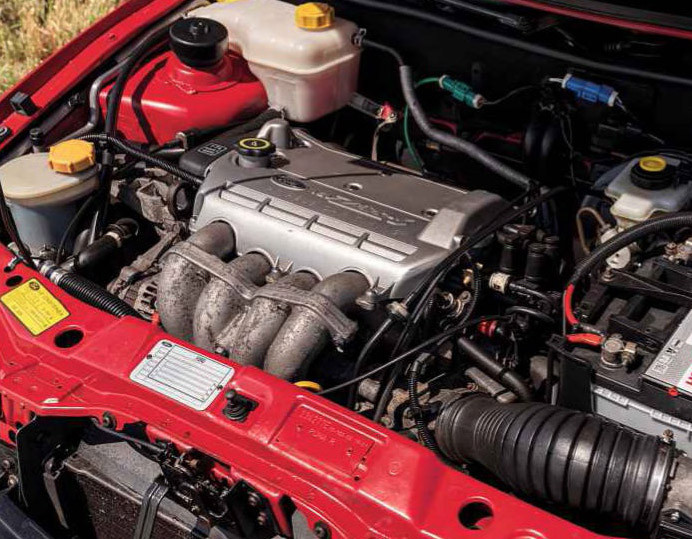
‘We decided just to make round rear lamps and put them behind a lens because they were cheap and easy to put in for the prototype design. I didn’t expect Ford to copy them exactly, but they did. I liked the idea of lamps behind a lens like we’d done on the DB7. It wasn’t long since we’d launched it and my name had been touted about at various levels of Ford, which was quite ironic really — I’d left Ford full-time because I never really got the chance to design a car there. I did more work for Ford after I left than when I worked there.
‘It’s funny looking at it now. I see a little bit of Escort Cosworth in the rolled shape of the rear bumper. I’ve been tempted to buy one — constantly — because it’s part of my life. If I’d have seen this one I’d have probably bought it. But I’ve got nowhere to put one. Stop it, Ian!’
He’d have to fight me for it. It’s a long time since I’ve driven a standard Puma 1.7, but it’s like pulling on a snug pair of trainers. Everything from the noise of the central locking deactivating to the weight of the manual handbrake releasing is embedded in my memory from driving one in my youth. I’m smitten before the needles of its spectacularly 1990s white dials have even sparked into life, and the rekindled love affair only intensifies as the miles click over.
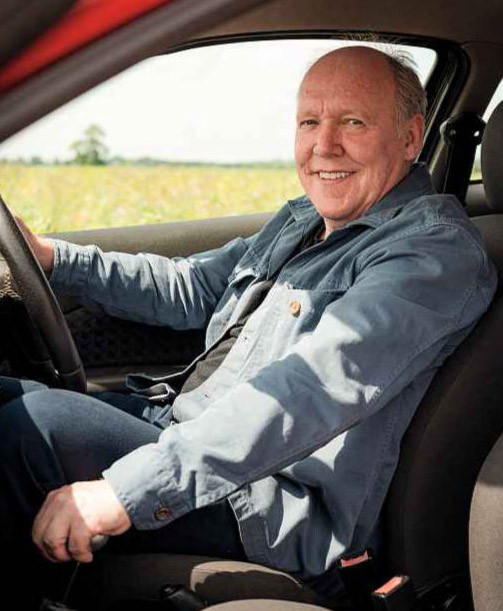
It’s a little slice of magic, the Puma. Callum’s slinky design may not give it the visual aggression of a hot hatch, but it drives with the verve and tenacity of one. Albeit with uncommonly cushy ride quality. I’d go as far as saying it’s one of the most cohesively engineered front-wheel-drive cars of all time. Every element feels perfectly in tune with how you want to drive with commitment on the road but without forgetting pure fun.
The steering is light and wonderfully weighted and operates through a wheel of Goldilocks proportions. The throttle is crisp and situated perfectly from the brake pedal should you be the sort who enjoys rev- matching their downshifts, a true (and rare) achievement in what’s effectively a parts-bin special based on a best-selling supermini. Doing so is an easily gained pleasure, much credit going to the wonderfully sharp reactions of that Yamaha engine.

Mind you, its linear responses and voracity for revs are counterbalanced by an appalling carbon footprint before a wheel had even turned. It started life as a 1.4-litre block at Ford’s Valencia plant, before being bored out to 1.7 litres then shipped to Yamaha in Japan, where it was treated to low-friction bore-plating and a forged crankshaft – a 25-minute process that breached Valencia’s six-minute cycle limit — before heading to Cologne where the car was put together. Madness.
Ford went on to offer 1.4- and 1.6-litre Pumas, helping lower insurance costs, but only the Yamaha unit ought to spike enthusiasts’ interest. This engine truly did deserve its own car, and it’s easy to argue that the Puma is fully deserving of its own engine. The pair make for a wonderful marriage. The manual gearshift is even better than I recall — one of my all- time favourites at any price point — and its delightfully weighted metal knob is one of the few changes afforded to Callums team for the donated Fiesta cabin, though pity a Puma driver on a blazing hot day.

Then there’s the handling. The rear axle is delighted to influence your cornering angle with the merest hint of a lightened throttle, but without being the least bit intimidating. There’s a deftness and sense of humour that proved absent from the gnarlier, grippier Racing Puma (which has transcended into true classic status and now commands five times as much money as its base car).
‘It got the handling and suspension sorted out by Richard Parry-Jones, which is probably why it drives so well,’ confirms Ian. ‘As a designer you want the car to be as low as possible. I was very particular about that. I wanted the car to be right and the clay model was set up to those dimensions. Eventually it went back to Dunton for feasibility and suddenly the car was lifted higher. This was something I believe Richard had instigated to improve the handling. I was a little upset by that.’
I’d wager the standard car wouldn’t be quite as magical to drive with Ian’s ideal set-up, and that it’s possibly RPJ’s most fun project. ‘I’m still pleased with the end design,’ he says. ‘Richard did like his rally driving and his sideway drifts a bit! I’ve been in the car with him. He was quite fierce. If I owned one I’d certainly drop the suspension on it, even if it was a Racing Puma.’
Ian didn’t work on the Racing, incidentally, and it’s not what he’ll seek out if he gives into his ever-brewing urge to dip into the classifieds. ‘I’d rather have one like this, something that’s more of a sleeper. I’d love to customise one, it’d be good fun. If I were to reimagine it — redo the bumpers, bigger wheels, sort the suspension out — it’d be a £75,000 car. It’s a lot of labour involved. A restomod should only be three times as much as a standard one would cost. You can’t do much for £15,000 here.’
A Puma as smart and as well-looked-after as the example here, which belongs to friend of Octane Nick Bailey, comes in at under £5000. Which feels bafflingly undervalued. This isn’t far off being a perfect little car, and aside from a ludicrously high driving position (Ian insisted on keeping the roof low, so thank goodness I’m comfortably under six foot), I’m struggling to muster any serious criticism. The major downfall — and perhaps the stumbling block to making these a true attainable classic — is the rear wheelarches, which rotted far too early into most Pumas’ lives. Many befell the infamous scrappage scheme. Buy a Racing — with its more muscular haunches slapped atop the stock body — and the rot could be eating away terrifyingly in secret. It’s a crying shame, though if you’ve somewhere warm and dry, it’s not like you’d need much space to stuff one of these away. And I bet you’d drive it more often than more expensive exotica it might be parked alongside. Few modern cars encourage using so much of their performance so much of the time.
The Puma was launched 25 years ago to an iconic advertising campaign that superimposed the car into the Bullitt universe with Steve McQueen behind the wheel. That the car (perhaps more than) lived up to such billing says everything you need to know. By 2002 it was gone, though, when the Fiesta entered a new generation and the Puma’s line was needed for production. The Mk5 Fiesta didn’t get a Callum-penned coupe, for shame.
‘They stopped it in its prime,’ laments Ian. ‘It’s almost unheard of to stop production when something is selling well. Nowadays you’d go off to China to get it built. Its decay curve was quite slow as these cars go. I think it was quite profitable for Ford, too.’ The nameplate was resuscitated on a small SUV, with Moray Callum — Ian’s brother — as its design head. It flew straight into the UK’s top ten best-sellers with production outdoing its ancestor’s 133,000 total in little more than a year.
‘When you come across a car like this it brings back good memories of good times. I can talk about the DB7 that way and the Vanquish to some degree. The TWR days were great fun. We did so many things that nowadays you wouldn’t get away with.’ The same seems true of designing a whole performance car around one engine and selling it for under 15 grand, but that’s exactly what Ford did — making perhaps its sweetest modern car in the process.
THANKS TO Puma owner Nick Bailey and to Steve Saxty for sourcing archive images.
Opposite, and this page Puma's distinctive kicked-up tail contrasts with the rounded rear end originally envisaged by Ian Callum, which wind-tunnel testing ultimately put paid to.
TECHNICAL DATA 2001 Ford Puma 1.7
- Engine 1679cc DOHC four-cylinder, 16-valve, variable cam timing, electronic fuel injection
- Max Power 123bhp @ 6300rpm
- Max Torque 116lb ft @ 4500rpm
- Transmission Five-speed manual, front-wheel drive
- Steering Rack and pinion, power-assisted
- Suspension Front: MacPherson struts, coil springs, anti-roll bar. Rear: semi-independent torsion beam, coil springs, telescopic dampers, anti-roll bar
- Brakes Vented discs front, drums rear, ABS Bosch
- Weight 1041kg
- Top speed 123mph
- 0-62mph 9.2sec
'I'M SMITTEN BEFORE THE NEEDLES OF ITS HITE DIALS HAVE EVEN SPARKED INTO LIFE'
Above and left Only 1.7 litres, but this revvy twin-cam was co-designed by Yamaha and found its only home here; Ian Callum was known for the Aston Martin DB7, plus such Fords as the RS200 and Escort Cosworth before he styled the Puma.
Left, above and below Puma is a delight on the open road, as writer Stephen Dobie finds; interior is stock Fiesta bar the gearknob and door casings.


